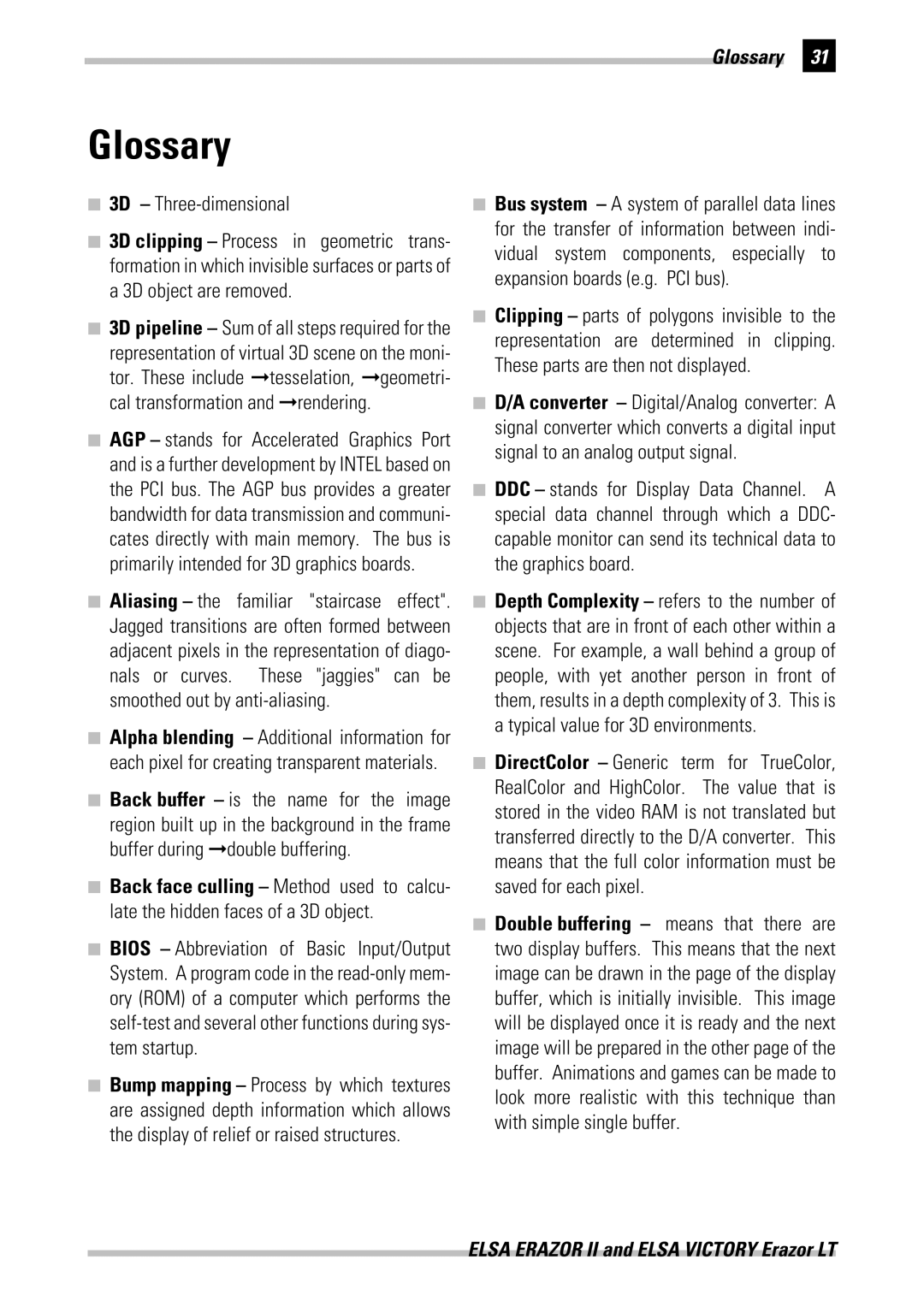
Glossary 31
Glossary
K3D – Three-dimensional
K3D clipping – Process in geometric trans- formation in which invisible surfaces or parts of a 3D object are removed.
K3D pipeline – Sum of all steps required for the representation of virtual 3D scene on the moni- tor. These include ➞tesselation, ➞geometri- cal transformation and ➞rendering.
KAGP – stands for Accelerated Graphics Port and is a further development by INTEL based on the PCI bus. The AGP bus provides a greater bandwidth for data transmission and communi- cates directly with main memory. The bus is primarily intended for 3D graphics boards.
KAliasing – the familiar "staircase effect". Jagged transitions are often formed between adjacent pixels in the representation of diago- nals or curves. These "jaggies" can be smoothed out by
KAlpha blending – Additional information for each pixel for creating transparent materials.
KBack buffer – is the name for the image region built up in the background in the frame buffer during ➞double buffering.
KBack face culling – Method used to calcu- late the hidden faces of a 3D object.
KBIOS – Abbreviation of Basic Input/Output System. A program code in the
KBump mapping – Process by which textures are assigned depth information which allows the display of relief or raised structures.
KBus system – A system of parallel data lines for the transfer of information between indi- vidual system components, especially to expansion boards (e.g. PCI bus).
KClipping – parts of polygons invisible to the representation are determined in clipping. These parts are then not displayed.
KD/A converter – Digital/Analog converter: A signal converter which converts a digital input signal to an analog output signal.
KDDC – stands for Display Data Channel. A special data channel through which a DDC- capable monitor can send its technical data to the graphics board.
KDepth Complexity – refers to the number of objects that are in front of each other within a scene. For example, a wall behind a group of people, with yet another person in front of them, results in a depth complexity of 3. This is a typical value for 3D environments.
KDirectColor – Generic term for TrueColor, RealColor and HighColor. The value that is stored in the video RAM is not translated but transferred directly to the D/A converter. This means that the full color information must be saved for each pixel.
KDouble buffering – means that there are two display buffers. This means that the next image can be drawn in the page of the display buffer, which is initially invisible. This image will be displayed once it is ready and the next image will be prepared in the other page of the buffer. Animations and games can be made to look more realistic with this technique than with simple single buffer.
